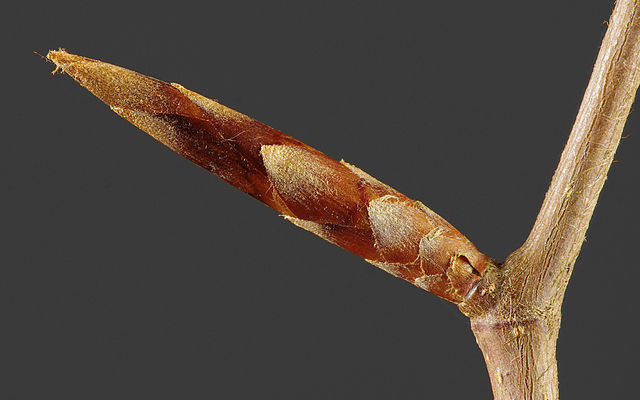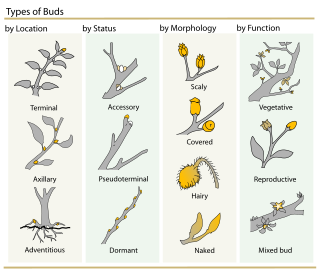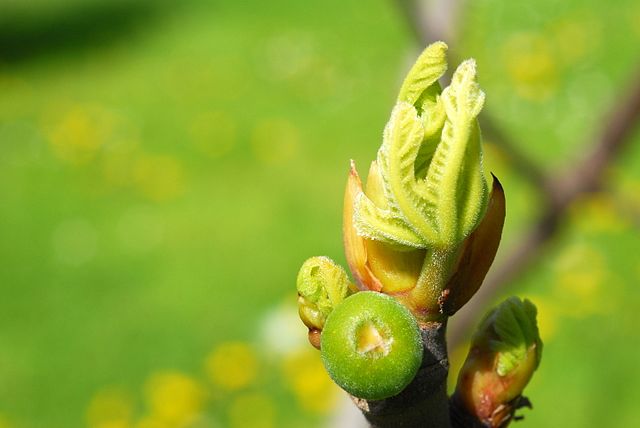Loading AI tools
Immature or embryonic shoot From Wikipedia, the free encyclopedia
In botany, a bud is an undeveloped or embryonic shoot and normally occurs in the axil of a leaf or at the tip of a stem. Once formed, a bud may remain for some time in a dormant condition, or it may form a shoot immediately. Buds may be specialized to develop flowers or short shoots or may have the potential for general shoot development. The term bud is also used in zoology, where it refers to an outgrowth from the body which can develop into a new individual.


The buds of many woody plants, especially in temperate or cold climates, are protected by a covering of modified leaves called scales which tightly enclose the more delicate parts of the bud. Many bud scales are covered by a gummy substance which serves as added protection. When the bud develops, the scales may enlarge somewhat but usually just drop off, leaving a series of horizontally-elongated scars on the surface of the growing stem. By means of these scars one can determine the age of any young branch, since each year's growth ends in the formation of a bud, the formation of which produces an additional group of bud scale scars. Continued growth of the branch causes these scars to be obliterated after a few years so that the total age of older branches cannot be determined by this means.[citation needed]
In many plants, scales do not form over the bud, and the bud is then called a naked bud.[1] The minute underdeveloped leaves in such buds are often excessively hairy. Naked buds are found in some shrubs, like some species of the Sumac and Viburnums (Viburnum alnifolium and V. lantana)[2] and in herbaceous plants. In many of the latter, buds are even more reduced, often consisting of undifferentiated masses of cells in the axils of leaves. A terminal bud occurs on the end of a stem and lateral buds are found on the side. A head of cabbage (see Brassica) is an exceptionally large terminal bud, while Brussels sprouts are large lateral buds.[citation needed]
Since buds are formed in the axils of leaves, their distribution on the stem is the same as that of leaves. There are alternate, opposite, and whorled buds, as well as the terminal bud at the tip of the stem. In many plants buds appear in unexpected places: these are known as adventitious buds.[3]
Often it is possible to find a bud in a remarkable series of gradations of bud scales. In the buckeye, for example, one may see a complete gradation from the small brown outer scale through larger scales which on unfolding become somewhat green to the inner scales of the bud, which are remarkably leaf-like. Such a series suggests that the scales of the bud are in truth leaves, modified to protect the more delicate parts of the plant during unfavorable periods.[citation needed]


Buds are often useful in the identification of plants, especially for woody plants in winter when leaves have fallen.[4] Buds may be classified and described according to different criteria: location, status, morphology, and function.[citation needed]
Botanists commonly use the following terms:
Seamless Wikipedia browsing. On steroids.
Every time you click a link to Wikipedia, Wiktionary or Wikiquote in your browser's search results, it will show the modern Wikiwand interface.
Wikiwand extension is a five stars, simple, with minimum permission required to keep your browsing private, safe and transparent.